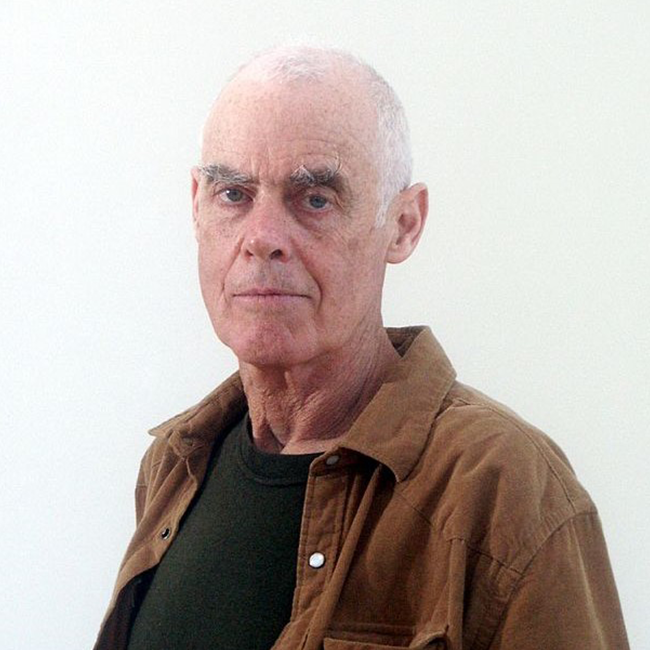Richard Long
Richard Long was born in 1945 in Bristol, UK, and studied at the West of England College of Art before continuing his studies at St. Martin's School of Art and Design in London in 1966. Long represented Britain in the British Pavilion at the 1976 Venice Biennale and received the Turner Prize in 1989. Considered one of Britain's most important land artists, known for his permanent and transitional works in a variety of mediums that address the complex relationship between man and nature, Richard Long's works have extended the possibilities of sculpture beyond traditional materials and methods.
Central to Long's work is the activity of walking. Since the mid-1960s he has taken countless walks around the world, in places such as the Sahara Desert, Australia, Iceland, and near his home in Bristol, UK. The walks bring together physical endurance and principles of order, action and idea. These walks and temporary works of passage are recorded with photographs, maps and texts, where measurements of time and distance, place names and phenomena are the vocabulary for both original ideas and powerful condensed narratives.
From these walks emerge the idea and material for his works. Long's sculptures usually take the form of geometric shapes-circles, lines, ellipses and spirals-and are often composed of minerals native to the place where they are located or to the British countryside that Long has walked. Similarly, he sources mud and soil from his expeditions for use in performance paintings made on canvas or directly on the wall.

Born in Brooklyn in 1953, Robert Longo witnessed at full force the post-war influence of mass media on society; his fascination with popular culture blossomed during his childhood, and, eventually, became a core element of his art.
His practice was immediately noticed, and, after obtaining a grant in 1972 to study at the Accademia di Belle Arti in Florence, he returned to the United States and received a BFA at the Buffalo State University College in 1975. He moved back to New York City later in the same decade, joining the underground artistic scene and was subsequently linked to the artistic group Picture Generation – which appropriated images from mass media to create their own art.
While Longo has worked in a variety of media – including performance, photography, sculpture and painting – he is best known for his large-scale, hyper-realistic charcoal drawings that reflect on the construction of symbols of power and authority. Inspired by Carl Jung's notion of the collective unconscious, he explores the effects of living in an image-saturated.
Despite his growth to adulthood while Pop Art was dominating the artistic scene, Robert Longo developed a completely different practice: his heavily contrasted, black and white, photo realistic drawings go against the Pop Art rhetoric of the glorification of the consumerist goods, as he rather seems to condemn the overpowering effect of capitalist society on its subjects. His technique involves the use of charcoal and graphite as malleable materials, as he works them into thick, porous paper to create visually impactful drawings. The richness of the black is also given by the use of ink and by the astounding contrast against sharp whites that he often carves out with an eraser.
La serie Men In The City (1980) presenta disegni a grandezza naturale di uomini e donne vestiti di tutto punto, contorti in pose inquietanti e mossi da una forza interiore travolgente. Longo, inoltre, ha spesso allargato la sua prospettiva per esplorare le gerarchie della società e concentrarsi sulle forze della natura, come nella serie Monsters, Kings, and Perfect Gods, sviluppata tra il 2000 e il 2016.
Robert Longo produce arte da oltre trent’anni ed è stato premiato con il Goslarer Kaiserring nel 2005. Ha esposto in istituzioni come il Brooklyn Museum – Brooklyn (2017), l’Albertina Museum – Vienna, il Berardo Museum – Lisbona, il Whitney Museum – Manhattan, il Reina Sofia – Madrid, il Metropolitan Museum of Art – New York e alla Biennale di Venezia.
